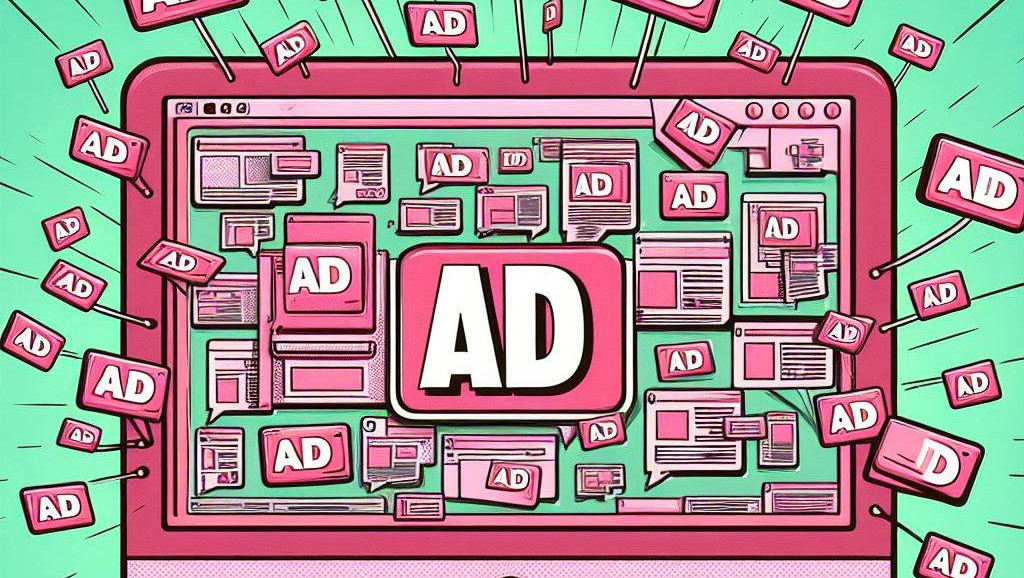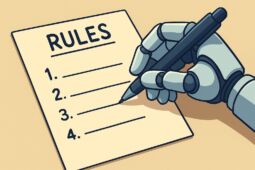AI, Ad Blockers, and the Publisher’s Short End of the Stick
by Shirley Marschall on 26th Nov 2025 in News

In this week's column, Shirley Marschall looks at the history of ad blocking, and why the user loses, and the publisher loses twice...
Remember those little 'No advertising. No flyers.' stickers people used to put on their mailboxes? The analogue ancestors of ad blockers. Back in the days when your letterbox overflowed with supermarket brochures you never asked for, never read, and never wanted. Most of them went straight into the bin...
Then the internet arrived, and with it digital advertising in its most chaotic, self-sabotaging form. Pop-ups, pop-unders, autoplay videos with sound, interstitials that hijacked the whole screen, and ads that followed you while scrolling ('sticky ads' - cute). These weren’t just annoying. They were intrusive, disruptive, and left users with a complete loss of control… unable to close, avoid, or escape the ad clutter hell. And if that wasn’t bad enough, there were far too many of them. So many that websites became basically unusable. The complaint shifted from 'the ads are too much' to 'the site simply doesn’t work.'
For publishers, it was a revenue engine; for users, it was pure UX vandalism. And the voices warning that ad stuffing was "sucking the life" out of websites (and doing publishers no favours) grew louder every year.
By 2015, the situation had become completely unsustainable, and the response finally arrived: the year of the ad blocker. For users, it felt like liberation. Finally, some peace of mind, finally reading an article without closing twelve pop-ups first. Publishers, unsurprisingly, were less thrilled. Some blocked access, others tried to bargain with readers, and a few pretended nothing was happening. What followed was not the smoothest experience either, with ad blockers now constantly nudging users to give a website an exception to the rule… but eventually peace was restored once the worst intruder ads started disappearing (except on MFA sites, but those aren’t built for humans anyway), and people got used to a calmer web. Our brains, now accustomed to ignoring banners entirely, took over the remaining filtering work.
This could have been a happy ending, right? Well… no.
As the intrusive formats faded, tracking filled the gap. Cross-site profiling, fingerprinting, retargeting, ID stitching, plus the regular stream of data broker scandals and leaks. "Surveillance economy" became a topic, and people increasingly uneasy about losing control of their data. And so users started fighting back… again.
As Dustin Cha, CEO of Ad-Shield, put it: "After the first generation of ad blockers blew up and became popular, a second generation followed. This time in many different formats: built into privacy browsers, VPNs, networks, apps, extensions, etc."
But these tools don’t just block ads. They block everything publishers rely on to survive. Analytics? Blocked. Paywalls? Blocked. Consent flows? Blocked. Even the "turn off your ad blocker" message? Gone. What started as a fight against tracking (unintentionally) turned into revenue blocking.
This is as bad as it gets, right? Well… no.
Then came GenAI, bringing a third wave of ad blocking. This time users don’t need to install anything. The tools simply don’t acknowledge ad slots as part of the web. And no, AI didn’t arrive to kill advertising, and everyone knows ads in chats are a matter of "when", not "if". But for now, GenAI ignores ads by default. LLM crawlers don’t see them. Agentic browsers like Comet have ad blocking baked in. AI assistants answer questions directly instead of sending users through search, meaning people never see, click, or convert on ads at all.
Publishers lose twice: their content is scraped and their traffic is bypassed.
Ironically, GenAI is one of the biggest data scrapers ever built, which makes the contrast even more striking. The people trying to block tracking and the people using GenAI tools that implicitly block ads are two different use cases, with some overlapping users.
In numbers: more than a billion users now sit behind some form of protective layer. That’s roughly 18 per cent of all internet traffic that is completely unmeasurable. That’s not niche… that’s a chunk of dark traffic, where publishers can‘t measure audiences, monetise inventory, personalise content, or enforce paywalls.
And enterprise adoption is accelerating too, especially since the FBI publicly recommended using an ad blocker to avoid scams in search ads. And when law enforcement tells the public to block ads, something has gone very, very wrong.
Meanwhile, scam VPNs and extensions are booming, and in a perfect irony of the modern web, users looking for "protection" often install the very thing that compromises them. Shady VPN apps, questionable browser extensions, hijacked agentic browsers… the list goes on. Fraudsters love this space, fuelled by AI and the seasonal wave of ad fraud that hits consumers every holiday season.
And when users get burned, they have no idea who to blame…They simply decide the web is untrustworthy, and who can blame them?
And publishers? They are left holding the short end of the stick. They didn’t invent the pop-up hellscape, or create the surveillance economy, or turn search ads into a scam minefield.
But they’re the ones losing traffic, analytics, revenue, and content visibility… while their journalism, culture, and information continue to be scraped, blocked, filtered, and bypassed.
Onwards and upwards from here, right? Well…tbd.
Ad BlockingAIPublisherTracking











Follow ExchangeWire